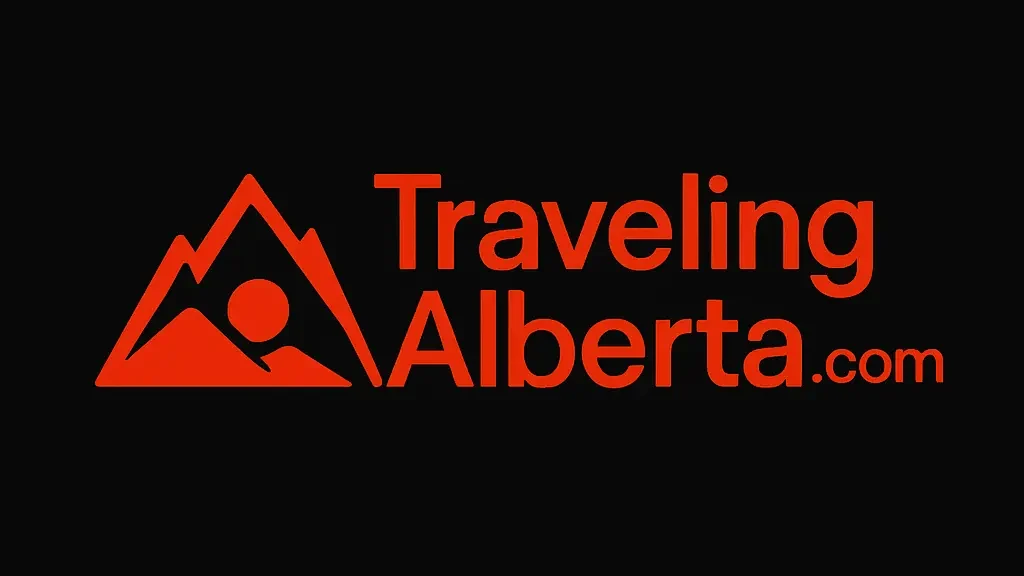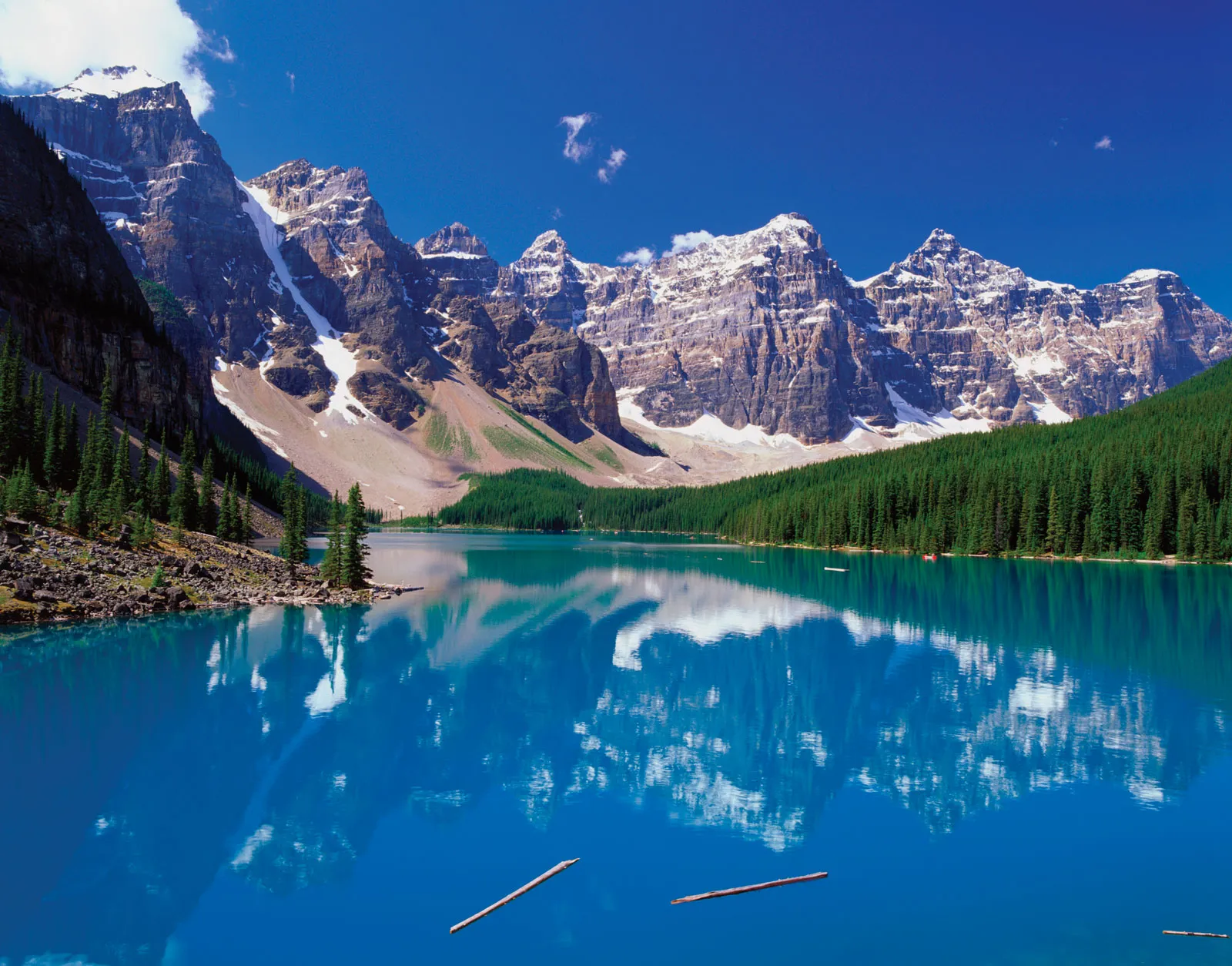Banff National Park, located in Alberta, is Canada’s first and one of its most spectacular national parks. Established in 1885, this park spans more than 6,600 square kilometers of untamed wilderness in the heart of the Canadian Rockies. As a UNESCO World Heritage Site, Banff is celebrated worldwide for its extraordinary natural beauty, diverse wildlife, and rich cultural significance. Towering snow-capped peaks, ancient glaciers, lush forests, and vibrant turquoise lakes create a setting that looks like it’s straight out of a postcard.
But Banff is more than just a destination for sightseeing — it’s a place where nature, culture, and adventure come together. The park’s lands are the traditional territories of the Stoney Nakoda, Ktunaxa, Secwépemc, and Tsuut’ina peoples, who have called this area home for thousands of years. Today, visitors can experience not only stunning landscapes but also learn about Indigenous heritage and the importance of conservation. The park attracts millions of visitors year-round who come to hike, ski, canoe, climb, and simply soak in the breathtaking surroundings. Banff National Park offers something for every traveler, whether you’re seeking adrenaline-pumping adventures, peaceful moments in nature, or cultural enrichment.
Why Visit Banff National Park (Alberta)?
Visiting Banff National Park offers an experience like no other. What makes Banff so special is the sheer diversity of its landscapes and activities. In one day, you could find yourself paddling across a turquoise lake, hiking through a wildflower-strewn meadow, spotting a grizzly bear from a safe distance, and enjoying a gourmet meal in a mountain lodge. The park is home to dramatic mountain scenery, vast glaciers, rushing rivers, and some of the clearest lakes in the world — a dream for photographers and nature lovers alike.
Outdoor enthusiasts will find no shortage of adventures. In summer, there are hundreds of kilometers of hiking and biking trails suitable for all skill levels, while the lakes and rivers invite canoeing, kayaking, and fishing. Winter brings opportunities for skiing, snowboarding, snowshoeing, and ice climbing at world-class resorts like Sunshine Village and Lake Louise Ski Resort. Banff is also ideal for those looking to unwind — soak in the historic Banff Upper Hot Springs, take a scenic drive, or explore the charming Banff townsite with its cozy cafes, art galleries, and boutiques. The accessibility of Banff — just a short drive from Calgary — makes it the perfect getaway for solo travelers, couples, and families alike.
Lake Louise
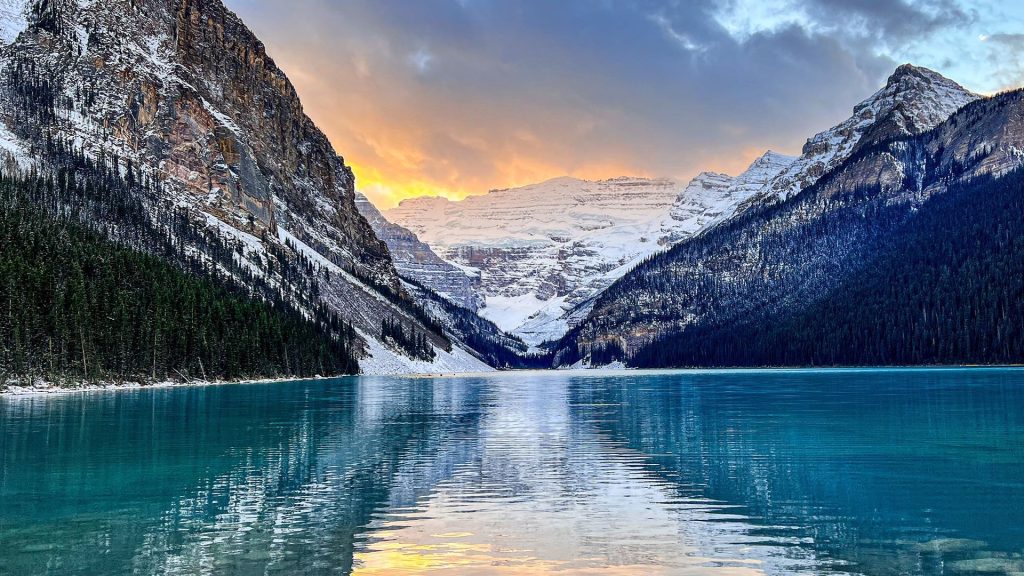
Lake Louise is one of the most iconic and breathtaking sites in Banff National Park. Nestled beneath Mount Victoria and fed by meltwater from the Victoria Glacier, its brilliant turquoise color is caused by fine rock flour deposited by glacial streams. The scenery is so picture-perfect that it’s been featured in travel magazines, postcards, and calendars around the world. In summer, visitors can stroll along the Lakeshore Trail, paddle a rented canoe, or take on one of the area’s famous hikes. The Plain of Six Glaciers Trail and the Lake Agnes Tea House Trail are two classic routes offering stunning views and rewarding stops for tea or a snack.
In winter, Lake Louise transforms into a wonderland of ice and snow. The lake’s surface becomes a massive skating rink, framed by frozen waterfalls and snow-covered peaks. The nearby Lake Louise Ski Resort is one of Canada’s premier destinations for skiing and snowboarding, offering slopes for all levels with jaw-dropping mountain vistas. Each January, the Ice Magic Festival draws talented ice sculptors who create dazzling works of art on the frozen lake. Whether you visit in summer or winter, Lake Louise promises an unforgettable experience.
Moraine Lake
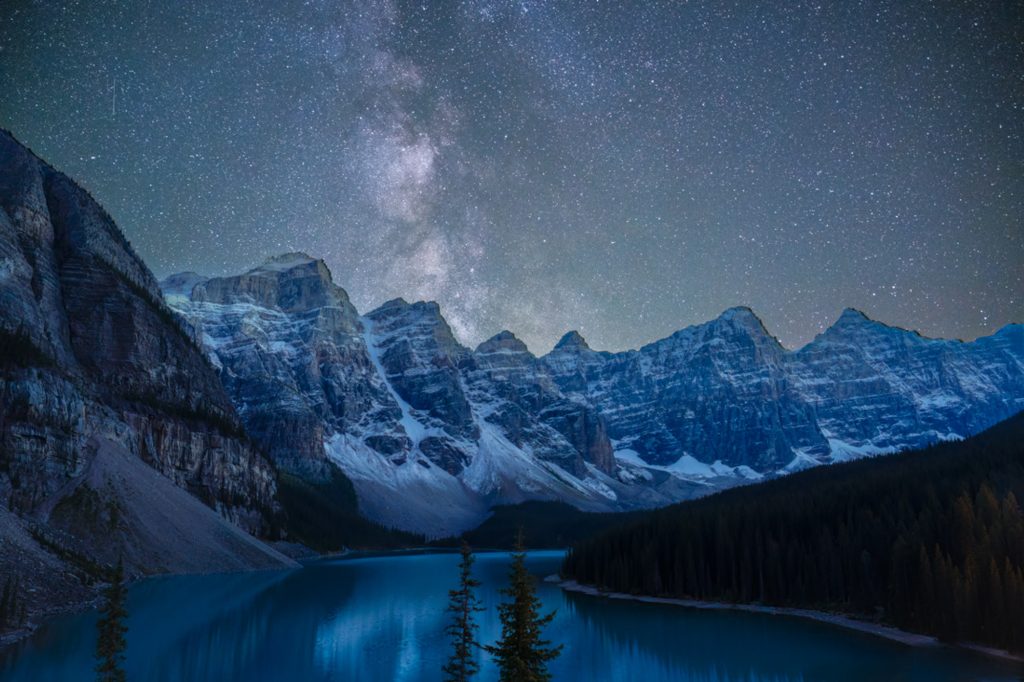
Moraine Lake is another crown jewel of Banff National Park, known for its intense blue-green waters and its spectacular setting in the Valley of the Ten Peaks. The lake’s color comes from glacial rock flour suspended in the water, which reflects sunlight in vivid hues. Set at an elevation of about 1,885 meters (6,183 feet), Moraine Lake is smaller than Lake Louise but equally famous, appearing on the old Canadian $20 bill and countless postcards.
Visitors often start at the Rockpile Trail, a short, easy climb that provides the classic panoramic view of the lake and surrounding peaks. This is one of the most photographed spots in the Canadian Rockies, and sunrise is a particularly magical time to visit, as the first light of day illuminates the peaks and casts a warm glow over the lake. Popular hiking routes from Moraine Lake include the Larch Valley Trail, which is stunning in autumn when the larch trees turn golden, and Sentinel Pass, which offers dramatic alpine views. Because of its popularity and environmental sensitivity, Moraine Lake is accessible only via shuttle, guided tour, or bike during the main tourist season. This helps preserve its beauty for generations to come.
Icefields Parkway
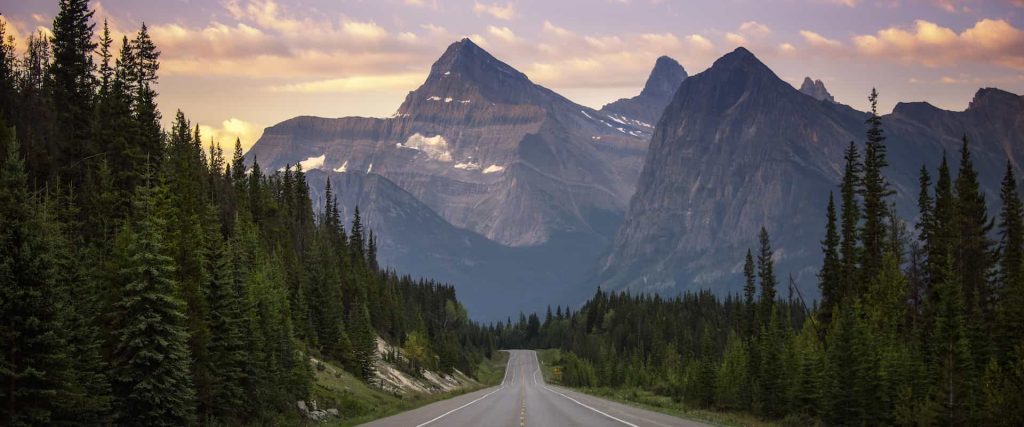
The Icefields Parkway is often called one of the most scenic drives on Earth — and for good reason. This 230-kilometer highway connects Lake Louise to Jasper National Park, offering travelers front-row views of some of the most dramatic landscapes in the Canadian Rockies. Along the route, visitors can stop at countless viewpoints, trailheads, and natural attractions, each more stunning than the last. Highlights include Peyto Lake, famous for its wolf-head shape and vibrant color; Bow Lake, a serene and reflective spot ideal for a picnic; and the Columbia Icefield, the largest icefield in the Rockies.
At the Columbia Icefield, you can join a guided Ice Explorer tour onto the Athabasca Glacier or venture onto the glass-floored Glacier Skywalk that hangs above the Sunwapta Valley — not for the faint of heart! Wildlife is abundant along the parkway: keep your eyes peeled for black bears, grizzly bears, mountain goats, elk, and bighorn sheep. The drive itself takes about 3 to 4 hours without stops, but most visitors take the entire day — or even several days — to explore the sights along the way. The Icefields Parkway is a must for anyone visiting Banff National Park.
Sulphur Mountain & Banff Gondola
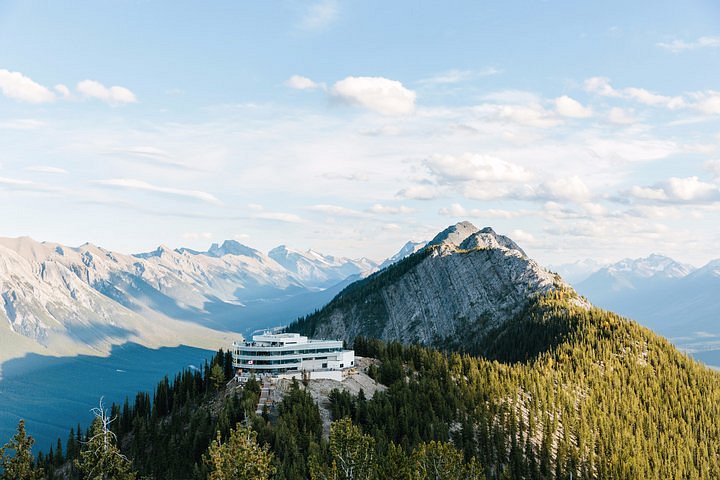
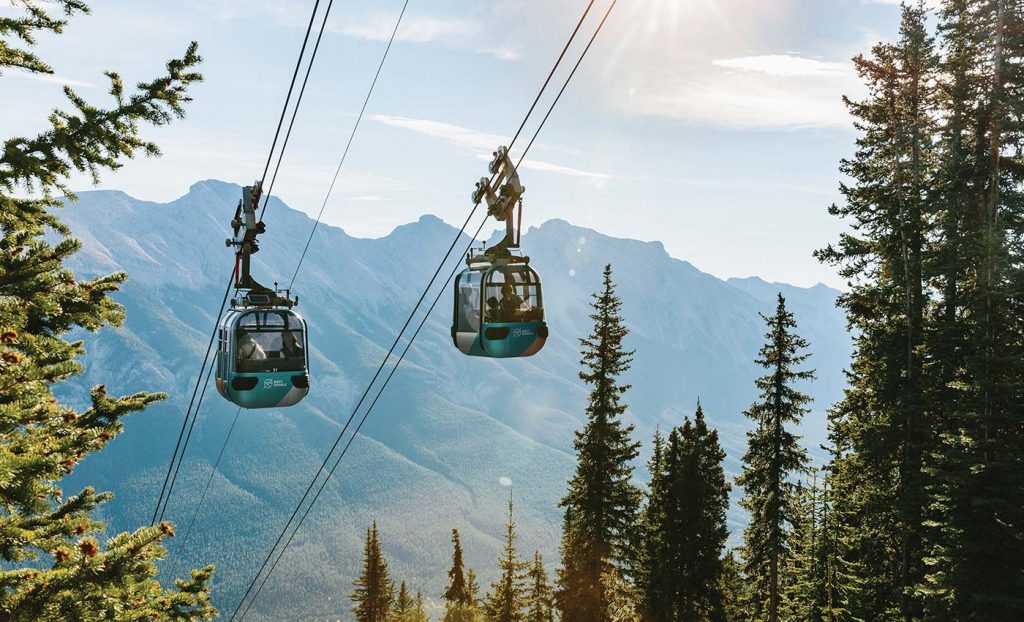
Sulphur Mountain, just minutes from the Banff townsite, offers one of the most spectacular viewpoints in the park. The Banff Gondola takes visitors up to the summit in an eight-minute ride, providing panoramic views of six mountain ranges, the Bow Valley, and the town of Banff far below. At the top, the summit complex features observation decks, a restaurant, a gift shop, and interactive exhibits that highlight the park’s geology, wildlife, and history.
Visitors can stroll along the Sulphur Mountain Boardwalk, a short walk that leads to the Cosmic Ray Station National Historic Site and a historic weather observatory. The views are incredible at any time of day, but sunrise and sunset are especially beautiful as the light changes the color of the mountains. For those who prefer to earn the view, a 5.5-kilometer hiking trail ascends the mountain’s slopes in a series of switchbacks — a popular challenge for fit hikers. In winter, the gondola remains open, offering cozy indoor spaces where visitors can warm up while still enjoying the snowy vistas. Special events like stargazing nights and mountaintop dinners add to the magic of this destination.
Johnston Canyon
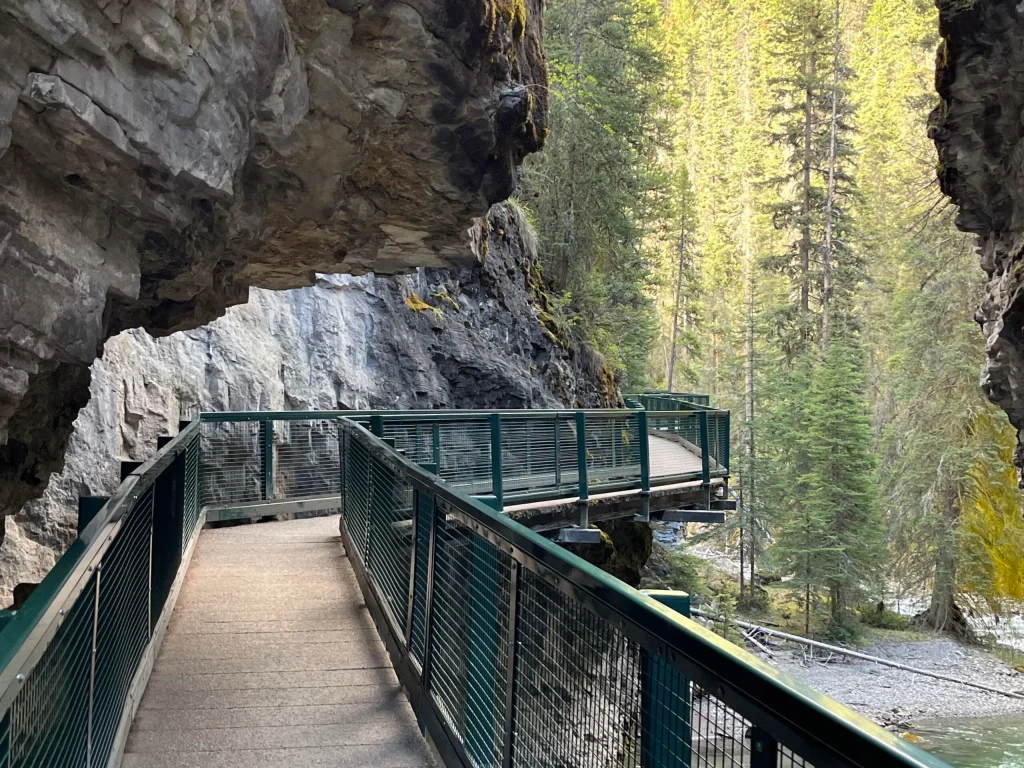
Johnston Canyon is one of Banff National Park’s most popular year-round destinations, offering a dramatic and accessible look at the power of water and ice. The trail through Johnston Canyon winds alongside and over the rushing Johnston Creek via catwalks and bridges, providing breathtaking views of the deep, narrow limestone gorge carved by centuries of flowing water. The first highlight of the hike is the Lower Falls, just 1.1 kilometers from the trailhead. Here, a small tunnel lets visitors peer through the rock to see the falls crashing into a turquoise pool.
Continue on for another 1.6 kilometers and you’ll reach the Upper Falls, where water plunges 30 meters over the cliff face into a swirling basin below. Adventurous hikers can push on to the Ink Pots, colorful mineral springs in a beautiful mountain meadow. In winter, Johnston Canyon is transformed into a frozen wonderland. The waterfalls turn to blue-white columns of ice, attracting climbers and photographers alike. Guided ice walks with cleats and safety gear are a popular way to explore safely during icy months. Early mornings or late afternoons are the best times to experience the canyon without the crowds.
Final Thoughts
Banff National Park and the surrounding wonders of Lake Louise, Moraine Lake, Icefields Parkway, Sulphur Mountain, and Johnston Canyon offer an unforgettable experience for any traveler. Whether you seek heart-pounding adventure, peaceful moments of reflection, or a chance to connect with nature and history, this region of the Canadian Rockies has it all. Every corner of Banff tells a story — of ancient glaciers carving valleys, of wildlife thriving in pristine wilderness, and of people working to protect this natural treasure for future generations.
To make the most of your visit, plan ahead, respect the park’s guidelines, and take time to slow down and truly soak in the scenery. Whether it’s your first visit or your tenth, Banff and Lake Louise always have something new to offer. From the breathtaking turquoise lakes to the towering peaks and vibrant cultural scene, this is a place that leaves a lasting imprint on the heart.
